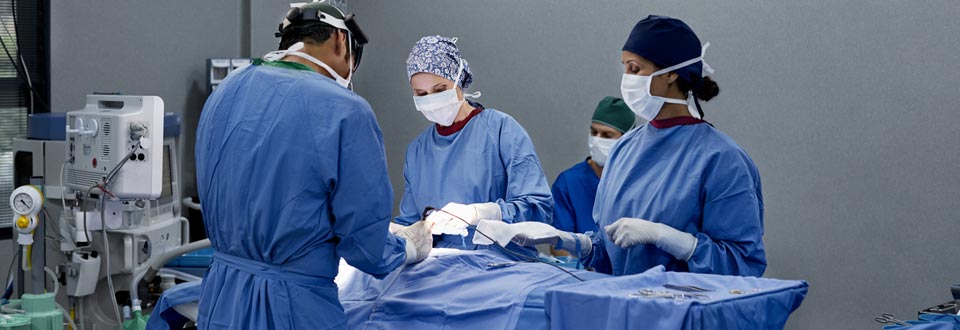Buffalo Ambulatory Surgery Center Services
Cosmetic Procedures
Occuplastics
Oculoplastics, or oculoplastic surgery, includes a wide variety of surgical procedures that deal with the orbit (eye socket), eyelids, tear ducts, and the face. It also deals with the reconstruction of the eye and associated structures.
Eyelid Procedures (Blepharoplasty)
Eyelid Procedures, also known as blepharoplasty, eyelid surgery improves the appearance of the upper eyelids, lower eyelids, or both. It gives a rejuvenated appearance to the surrounding area of your eyes, making you look more rested and alert.
Ptosis
Ptosis is a drooping or falling of the upper or lower eyelid. The drooping may be worse after being awake longer, when the individual's muscles are tired. This condition is sometimes called "lazy eye", but that term normally refers to amblyopia. If severe enough and left untreated, the drooping eyelid can cause other conditions, such as amblyopia or astigmatism.
Tear Duct Probing
Probing is a procedure that is sometimes used to clear or open a blocked tear duct. The doctor inserts a surgical probe into the opening (punctum) of the tear duct to clear the blockage. Afterward, he or she may insert into the duct a tiny tube with water running through it. The water contains a fluorescein dye. If the doctor sees that dye has moved into the nasal cavity, he or she will know that probing worked.
Ophthalmology
Cataract Surgery
Cataract surgery is the removal of the natural lens of the eye (also called "crystalline lens") that has developed an opacification, which is referred to as a cataract. Metabolic changes of the crystalline lens fibers over time lead to the development of the cataract and loss of transparency, causing impairment or loss of vision. Many patients' first symptoms are strong glare from lights and small light sources at night, along with reduced acuity at low light levels. During cataract surgery, a patient's cloudy natural lens is removed and replaced with a synthetic lens to restore the lens's transparency.
Laser Assisted Cataract Surgery
The role of femtosecond lasers in cataract surgery is to assist or replace several aspects of the manual cataract surgery. These include the creation of the initial surgical incisions in the cornea, the creation of the capsulotomy, and the initial fragmenting (breaking up) of the lens. The femtosecond laser may also produce incisions within the peripheral cornea to aid the correction of pre-existing astigmatism.
Glaucoma Surgery
Glaucoma is a group of diseases affecting the optic nerve that results in vision loss and is frequently characterized by raised intraocular pressure (IOP). There are many glaucoma surgeries, and variations or combinations of those surgeries, that facilitate the escape of excess aqueous humor from the eye to lower intraocular pressure, and a few that lower IOP by decreasing the production of aqueous.
Retina Procedures
Vitrectomy
Vitrectomy is surgery to remove some or all of the vitreous humor from the eye. Anterior vitrectomy entails removing small portions of the vitreous from the front structures of the eye—often because these are tangled in an intraocular lens or other structures. Pars plana vitrectomy is a general term for a group of operations accomplished in the deeper part of the eye, all of which involve removing some or all of the vitreous—the eye's clear internal jelly.
Retinal Detachment
Retinal detachment is a disorder of the eye in which the retina peels away from its underlying layer of support tissue. Initial detachment may be localized, but without rapid treatment the entire retina may detach, leading to vision loss and blindness. It is a medical emergency. Permanent damage may occur, if the detachment is not repaired within 24–72 hours.
The retina is a thin layer of light sensitive tissue on the back wall of the eye. The optical system of the eye focuses light on the retina much like light is focused on the film or sensor in a camera. The retina translates that focused image into neural impulses and sends them to the brain via the optic nerve. Occasionally, posterior vitreous detachment, injury or trauma to the eye or head may cause a small tear in the retina. The tear allows vitreous fluid to seep through it under the retina, and peel it away like a bubble in wallpaper.
Membrane Peel (Membranectomy)
Scar tissue or epiretinal membranes may form on the surface of the retina in many situations, including macular pucker, macular hole, and complicated retinal detachment. After completion of vitrectomy, the epiretinal membranes are delicately peeled from the surface of the retina and removed from the eye using micro-forceps. If the membrane is particularly dense, micro-scissors may be used to release it from the retina.




